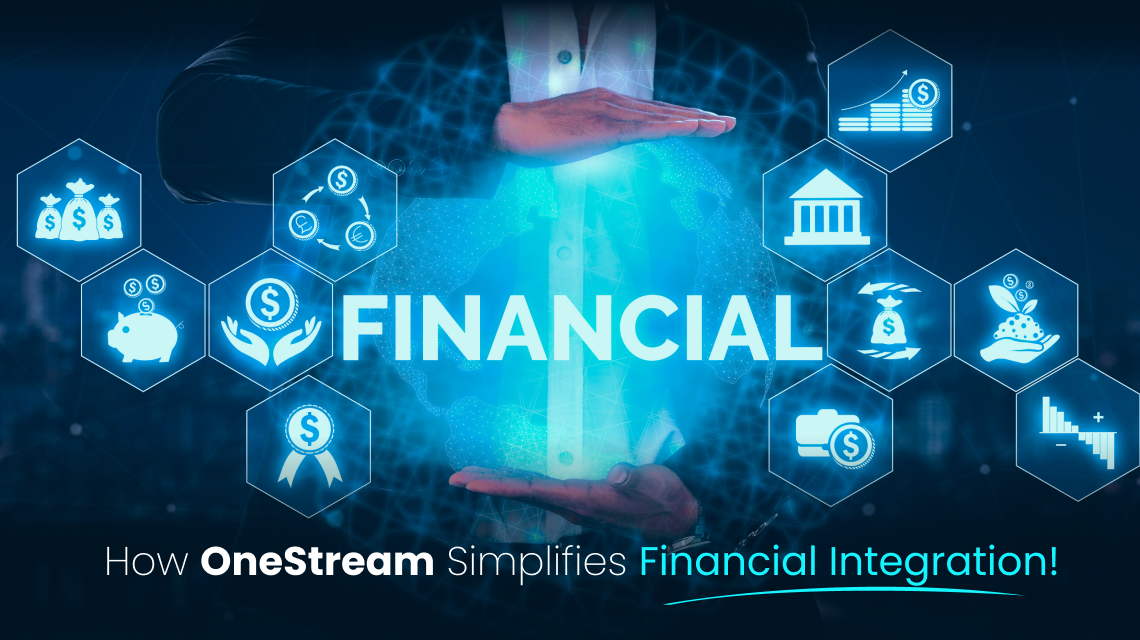
Table of Contents
Introduction
Strong tools that can manage complicated data, offer real-time insights, and expedite procedures are necessary for financial planning and reporting in the fast-paced business world of today. OneStream is an effective tool for enterprise performance management (EPM) because of its Cube feature, which forms the basis for storing, processing, and analyzing massive amounts of financial data. This blog explores the role of cubes in OneStream, their impact on financial planning and reporting, and best practices for leveraging them effectively.
This blog will explore what cubes are, how they work in OneStream, and best practices for leveraging them effectively.
What are Cubes in OneStream?
A Cube in OneStream a multifaceted data storage structure that helps businesses handle and examine operational and financial data in a variety of ways. By effectively arranging data for rapid retrieval and analysis, it serves as the foundation for financial reporting, forecasting, and analytics.
Essential Features of Cubes:
• Account, Time, Entity, Scenario, and other dimensions are supported by multidimensional data structures.
• Effective Data Storage: Holds both comprehensive and aggregated financial data.
• Scalability: The ability to manage high data quantities without sacrificing efficiency.
• Quick data processing makes it possible to do computations and consolidations in real time.
• Integration with Workflows: Used in financial close, budgeting, and planning processes.
• User-Friendly Interface: Intuitive design that simplifies complex financial processes.
• Security & Access Control: Ensures data integrity with role-based permissions.
Core Components of a Cubes in OneStream
- Dimensions – Cubes use multiple dimensions to categorize and organize data.
Common dimensions include:
a. Account Dimension (Revenue, Expenses, Assets, Liabilities)
b. Entity Dimension (Business Units, Subsidiaries)
c. Time Dimension (Months, Quarters, Years)
d. Scenario Dimension (Actuals, Budget, Forecast)
e. Flow Dimensions (Tracks data movement e.g., adjustments, eliminations, intercompany transactions).
f. Intercompany Dimensions (Tracks intercompany transactions and eliminations)
g. View Dimensions (Manages different views of data e.g., periodic, year-to-date)
h. Origin Dimensions (Used to categorize data based on its source or origin for Data Traceability, Data Quality, Data Integration)
i. User-Defined Dimensions (UD1 – UD8) (Custom dimensions tailored to business needs, such as Product, Customer, Region, Department, or Project.)
j. Consolidation Dimensions (Translation, share, eliminations, adjustments, consolidation details, and assigned currencies, with additional currencies configurable in Application Properties)
k. Currency Dimensions (Financial consolidation and reporting, ensuring consistency and accuracy in multi-currency environments) - Members and Hierarchies – Each dimension consists of members that define data structures. Hierarchies allow for roll-ups and drilldowns.
- Finance Rules & Business Logic – Cubes allow calculations and allocations using custom business rules. Business rules and calculations define how data is processed, aggregated, or transformed within the cube. They are essential for automating complex financial logic.
Types of Rules:- Consolidation Rules: Automate the roll-up of data from child to parent members (e.g., aggregating regional sales to total sales).
- Allocation Rules: Share information among participants (e.g., assigning divisions to handle overhead costs).
- Custom Calculations: Carry out complex computations such as forecasting, variance analysis, and currency conversion.
- Data Storage & Aggregation – Data is stored at different levels (base level and aggregated level) to optimize reporting performance.
- Data Cells – Data cells are the intersection points of dimensions where actual data values are stored. Each cell represents a unique combination of dimension members.
- Attributes – Additional metadata regarding dimension members is provided by attributes. They are employed to further classify or characterize individuals.
- Security Features – OneStream cubes’ security is a vital component. It guarantees that users can only read or update the material that they are permitted to.
a. Role-Based Access Control (RBAC): Assign rights according to user roles using role-based access control, or RBAC.
b. Dimension Security: Limit access to particular dimension members by implementing dimension security (e.g., allowing a user to view data for their region alone).
c. Cell-Level Security: Control access to particular data cells.
How Cubes Work in OneStream
- Data Collection & Storage
a. Data is loaded into cubes from multiple sources, including ERP systems, spreadsheets, and external databases.
b. OneStream’s extensible data model ensures that financial and operational data coexist in the same cube. - Data Consolidation
a. OneStream automates financial consolidation by aggregating data across business entities, handling intercompany eliminations, currency conversions, and journal adjustments. - Data Retrieval & Reporting
a. Users can extract data from cubes using CubeViews, Dashboards, and Excel Add-ins.
b. Drill-through capabilities allow users to analyze transactional data behind high-level reports. - Scenario Modeling & Forecasting
a. Finance teams use cubes for scenario planning, comparing actual vs. budgeted data, and running what-if analyses.
Best Practices for Optimizing OneStream Cubes
- Design a Scalable Cube Structure: Ensure dimensions and hierarchies are well-organized to accommodate future growth.
- Use Sparse vs. Dense Dimensions: Optimize cube performance by defining dimensions correctly; account and time dimensions are typically dense, while entity and scenario dimensions are sparse.
- Leverage Business Rules Effectively: Use OneStream’s finance rules to automate complex calculations, data allocations, and adjustments.
- Implement Data Validation and Security: establishing role-based access and workflow approvals to preserve data integrity.
- Monitor Cube Performance: To improve efficiency, evaluate cube processing times on a regular basis and optimize calculations and formulas.
Real-World Use Cases of Cubes in OneStream
• Financial Close & Consolidation:
Automate and simplify month-end and year-end financial reporting
• Budgeting & Forecasting:
Create multi-year strategic planning models and rolling projections.
• Operational Performance Analysis:
Monitor profitability, cost distributions among business units, and key performance indicators.
• Regulatory & Compliance Reporting:
Produce financial reports that adhere to GAAP, IFRS, and other accounting guidelines.
Conclusion
OneStream cubes serve as the cornerstone of effective financial analysis and reporting. By mastering cube structures, finance teams can streamline consolidation, improve forecasting accuracy, and enhance decision-making across the organization.
Have you used Cube in OneStream? Share your experiences in the comments below! If you’re new to OneStream, let us know what challenges you’re facing, and we’ll help you find the right solution. Don’t forget to share this blog with your network to spread the knowledge!

Shruti Prajapati
Technical Project Manager
A results-driven Technical Project Manager with nearly a decade of experience in IT, specializing in Agile methodologies and end-to-end software development. Skilled in leading cross-functional teams, optimizing project workflows, and delivering high-impact solutions across mobile and web technologies. With expertise in domains such as IoT, E-Commerce, Healthcare, and Social platforms, She is passionate about driving innovation, efficiency, and success in every project.











 sales@solutionanalysts.com
sales@solutionanalysts.com biz.solutionanalysts
biz.solutionanalysts






